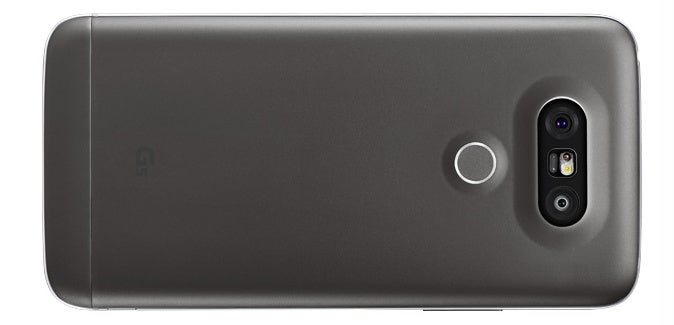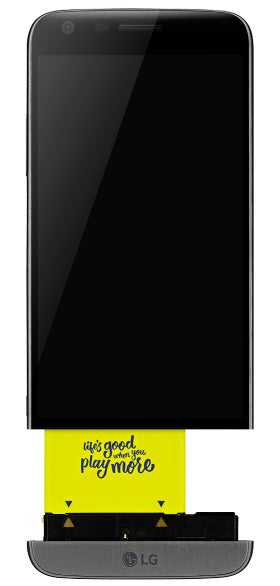LG G5 vs Samsung Galaxy S6 edge+: first look

The LG G5 ushers LG into a new era of design with a very radical idea of modular design. LG is the first to feature such a phone on a mass market scale with the G5 and the company takes pride in breaking the mold of an otherwise somewhat mundane smartphone market.
There is one more company that is pushing the boundaries with futuristic new ideas: Samsung with its Edge devices has been offering users unique functionality since early last year.
So how do these innovative ideas compare? We take a look at the LG G5 and Samsung's Galaxy S6 Edge+ for a quick comparison straight from the MWC 2016 showroom floor.
Design and Display
Stylish in their own right: the metal construction of the G5 is sturdy and solid, but does not inspire, while the S6 Edge+ is a beautiful concoction of metal and glass.
First, let's speak about the feel and design of the two phones. The LG G5 features an all-new for LG metal build that feels solid and well built, while the Samsung Galaxy S6 Edge+ is built around a metal frame and two glass panels on the back and front. Both are clearly premium designs, but we'd say that the G5 lacks just a bit of definition in its visual style and we'd give our personal preference to the feel of the S6 Edge+.
Then, there is the difference in size: the S6 Edge+ features a much larger, 5.7" display, while the LG G5 sports a 5.3" screen, but the actual difference in physical size between the two is not all that big. The S6 Edge+ is a bit taller and wider, but also thinner. Here are the exact dimension for the two phones: 6.08 x 2.98 x 0.27 inches for the Galaxy versus 5.88 x 2.91 x 0.29 inches for the G5.
The highlight of the G5 is, of course, its removable bottom part and the option to add one of two accessories: a camera grip with extended battery or Hi-Fi audio module. You can also quickly swap batteries this way, which is great.
The LG G5 features a 5.3" IPS LCD display with a Quad HD resolution, while the Galaxy S6 Edge+ sports a 5.7" Super AMOLED screen with the same Quad HD resolution. Both look very sharp, with great color representation. It's worth noting that LG has made this a very bright display, so it should be easy to read outdoors, while the Galaxy's AMOLED screen features deep blacks, great contrast and the option to select between various screen modes.
Then, there is LG's new Always-on Display mode, which shows the time and missed notifications on your screen at all times. LG says it has done some clever engineering, so that it can consume very little power - the battery drain is just 0.8% per hour (still, that works out to nearly 20% per day). The S6 Edge+ lacks such a mode.
Performance and storage
The LG G5's Snapdragon 820 obliterates the Exynos 7 Octa, but that's a difference mostly felt in games, while in real-life both feel similarly fast.
Snapdragon 820 is faster than the Exynos 7 Octa
Being the newer phone, the LG G5 also ships with the latest and most powerful chip in the Android space to date: the Snapdragon 820. The new 64-bit Qualcomm SoC delivers on all fronts as it breaks all previous AnTuTu benchmark records and holds the promise to deliver outstanding gaming performance. The S7 Edge+, on its part, runs on the Exynos 7 Octa 7420 system chip, a powerful in-house made chip by Samsung, but even though this was one of the best processors around last year, it can't hold a candle to the Snapdragon 820.In daily performance, though, this difference is far less pronounced than benchmarks say: both phones feel fast. We all know about the slight but very persistent TouchWiz stutter that is present on all Samsungs and the S6 Edge+ is no exception, but apart from that the phones run well.
Camera
The new dual-system camera on the G5 along with the camera grip bring some variety to traditional phone cameras, while the S6 Edge+ has a traditional, but solid camera.

With LG and Samsung, we're speaking of two companies that make some of the finest cameras on a phone. The LG G5 promises to be no exception: it packs what looks like the same excellent 16MP camera we've seen in phones like the LG G5 and LG V10, but also adds a secondary, 8-megapixel shooter on the back that captures wider-angle images, similar to what you can get on a GoPro.
The Samsung Galaxy S6 Edge+, on its part, does not have any outworldly tricks, but its 16-megapixel camera is great: fast, reliable, able to capture great-looking images in various lighting conditions.
Both are also capable of recording 4K video at 30 frames per second, and you have optical image stabilization (OIS) on both phones to help get rid of annoying hand shake in video.
When it comes to selfies, the LG G5 has an 8MP front camera, while the Galaxy S6 Edge+ features a 5-megapixel front shooter.
Battery
Both don't have the largest batteries out there, but we're yet to test the LG G5.

Since it has a larger footprint, we see a higher capacity battery cell with the Galaxy S6 edge+. Boasting a 3000 mAh battery, many would notice that the battery is smaller than many phones of that size, but no need to worry: this phone is a longevity beast. In our battery benchmark test, it’s able to last 9 hours and 29 minutes – besting the results produced by the Galaxy S6, S6 edge, and Note5 in the process. We can also attest its fantastic longevity on a real world basis, since it’s able to last a solid one-day of use – where we’ve seen it at roughly the 25% mark right before calling it quits for the day.
Expectations
All in all, it's clear that the LG G5 has the radical new ideas and more powerful Snapdragon 820 system chip to steal the show from the Galaxy S6 Edge+ in many ways. However, the somewhat smallish battery is a red flag that we're not sure everyone will like. For all else, these are two very stylish Android phones that feature great cameras and reliable performance.













Things that are NOT allowed: